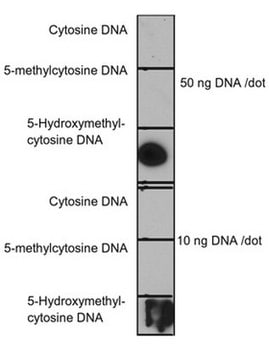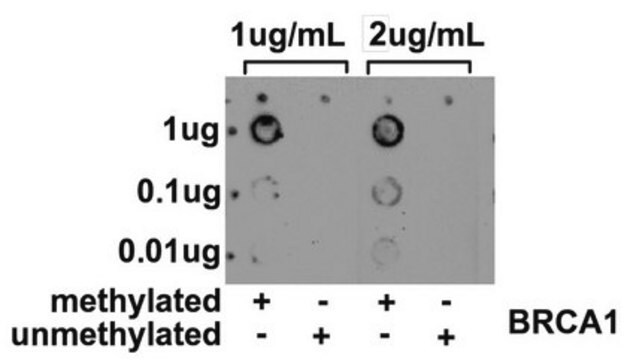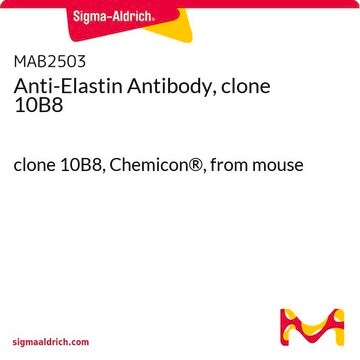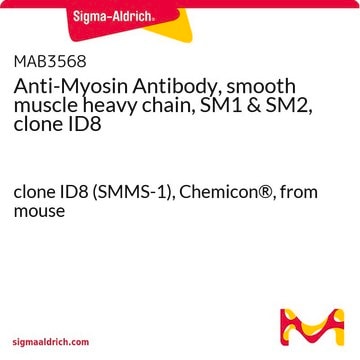MABE251
Anti-5-hydroxymethylcytosine (5hmC) Antibody, clone HMC 31
clone HMC 31, from mouse
About This Item
Productos recomendados
biological source
mouse
Quality Level
antibody form
purified immunoglobulin
antibody product type
primary antibodies
clone
HMC 31, monoclonal
species reactivity (predicted by homology)
all
technique(s)
ELISA: suitable
dot blot: suitable
methylated DNA immunoprecipitation (MeDIP): suitable
isotype
IgG1κ
shipped in
wet ice
target post-translational modification
unmodified
General description
Specificity
Immunogen
Application
Methylated DNA Immunoprecipitation (MeDIP) Analysis: A representative lot immunoprecipitated 5-hydroxymethylcytosine in ChIP.
Epigenetics & Nuclear Function
Chromatin Biology
Quality
Dot Blot Analysis: 0.1 µg/mL of this antibody detected 5-hydroxymethylcytosine in 10 ng and 50 ng of unmodified and modified cytosine DNA.
Target description
Physical form
Storage and Stability
Analysis Note
Unmodified and modified cytosine DNA.
Other Notes
Disclaimer
¿No encuentra el producto adecuado?
Pruebe nuestro Herramienta de selección de productos.
Storage Class
12 - Non Combustible Liquids
wgk_germany
WGK 1
flash_point_f
Not applicable
flash_point_c
Not applicable
Certificados de análisis (COA)
Busque Certificados de análisis (COA) introduciendo el número de lote del producto. Los números de lote se encuentran en la etiqueta del producto después de las palabras «Lot» o «Batch»
¿Ya tiene este producto?
Encuentre la documentación para los productos que ha comprado recientemente en la Biblioteca de documentos.
Nuestro equipo de científicos tiene experiencia en todas las áreas de investigación: Ciencias de la vida, Ciencia de los materiales, Síntesis química, Cromatografía, Analítica y muchas otras.
Póngase en contacto con el Servicio técnico








